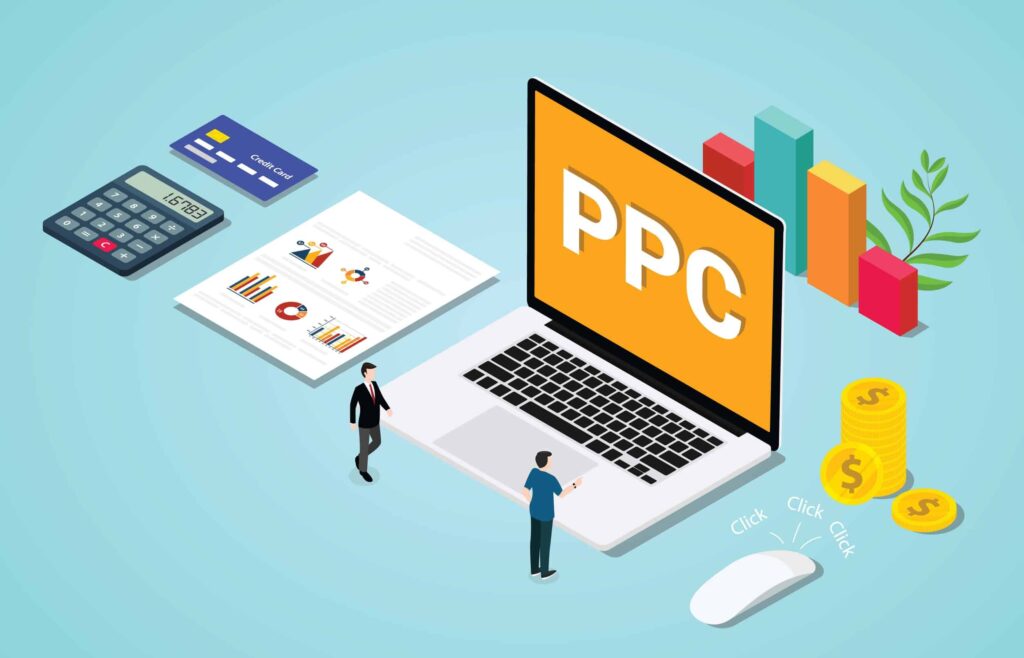Table of contents

11 marketers reveal their e-commerce visibility tactics during Covid-19
To tackle the impact of the pandemic, companies worldwide have been stepping up their online game. We’ve spoken with 11 marketers about the top tactics they used to boost e-commerce visibility for their online businesses during the past few months. Here’s what’s worked.
1. Boost conversions for essential products and services

While revenues in some sectors were negatively impacted by the crisis, businesses supplying essential products or services were dealing with increased online demand, which resulted in a need to implement key actions in order to cope with it, and increase e-commerce visibility in a competitive marketplace.
Online pharmacy Esyms.com implemented tactics to boost online conversions, but also wanted to offer their online community valuable information, so they created relevant online content: “Knowing that masks were in high demand, we gave out free masks with purchases to boost conversion rates,” says Fion Lam, Esyms’ e-commerce marketing lead.
“We created a Covid-19 updates page to give regular updates on the Covid-19 season and that got us a lot of extra eyeballs.”
Esmys also launched promotions on other high in-demand goods such as face sanitizers, hand wash and vitamins, wellness and personal care products.
Another clever way the online pharmacy boosted conversions was by giving away free samples of their top products to users who downloaded their app. This meant they could subsequently send push notifications and additional promotions.
2. Step up ad spend on social media and online
With many brands becoming more fearful of investing in ads, others took advantage of the less competitive space. “We found that our competitors were more reluctant of running ads during the time of uncertainty, so we stepped up our CPC budget on our highly converting keywords that have worked well for us in the past (Amazon PPC, Pinterest and Instagram). We noticed that total ACOS was way down on what we were experiencing 6 months earlier. In some instances running around 10-12%.” says Chris Chalk, CEO and Co-Founder of Jungle Straws, a sustainable products company that supplies reusable bamboo straws and eco-friendly products and sells them on multiple platforms worldwide.
“We placed more aggressive bids on keywords that had historically worked well for us amidst the backdrop of uncertainty and saw a huge reduction on ACoS and TACos, mainly on Amazon.”
Chris also stresses the importance of knowing where your audience spends their time. “It’s important to know exactly where your target audience hangs out online, and for us, that’s Pinterest. We doubled down on our content creation and found that infographics worked particularly well with CTR’s of over 20% in some instances.”
3. Relevant content is still king
While content remained a key area of focus for brands looking to increase e-commerce visibility, this needed to reflect the current context and be relevant and informative. Creativity has no doubt been the key to boosting online content performance:
“Using Pinterest analytics we posted high-value content 3-4 times a day at specific times that gave us the very best exposure that our audience engaged with. The pins were focused on ‘value’ and offered tangible advice and suggestions for things to do during lock-down/quarantine in the form of blogs.”
“Through content marketing we were able to convert this traffic to sales on our website.” says Chris Chalk from Jungle Straws. According to him, leveraging creativity to boost online content performance has been a winning strategy: “By offering value and information in the form of infographics, memes, blogs, recipes and more, we found that our web traffic increased in line with our expectations.”
Tyler Brooks from JAM Paper & Envelope echoed the sentiment, saying that one of the most effective ways to improve conversions is using “high-quality images and/or video on your product pages.”
Sam Williamson, co-founder of UK-based CBD supplement supplier CBDiablo, explains how their team searched out relevant keywords and terms. “Because many of the tools we used hadn’t yet picked up on the new types of queries that people were searching for during the pandemic as the data was so new, we had to use different tactics to find what people were searching for and what to write about – this included looking at what people were searching for on our website, and seeing what appears within the Google suggestions in the search bar.
“We quickly found some topics related to our industry that seemed to be relevant for us to write about or include within existing content, so we wrote about them. These quick changes allowed us to receive a lot more traffic from Google for terms related to our business, and also allowed us to demonstrate our authority on the topics and foster trust within our customers”, says Sam Williamson.
4. Invest in local SEO
Despite shops closures, marketers took this time to reassess their strategy and think ahead to gain a competitive advantage. Among their priorities was local SEO:
“With our online visibility, we pushed a new program to get a jump start on our local brick and mortar stores, which we have over 75 of. All location pages for these stores were optimised for all the keywords related to our industry”
– comments Celeste Huffman, Digital Marketing Specialist at online jewellery store Rogers & Hollands.
“We did this because we knew we would be able to open up again eventually and wanted to hit the ground running with more people being able to find our stores. Within the past month, we have already seen a 30% jump in page 1 positioning for our location pages from this strategy”, adds Celeste.
5. Use SEO tactics in a clever way

With companies finding ways to adapt to new market demands, some leveraged organic search to their advantage. Online container and packaging company FH Packaging’s Digital Media Manager Marcos Torres tells us that his company was able to shift product focus to a more in-demand product (hand sanitizer packaging), and their efforts were supported by leveraging popular search results.
“Instead of naming our bottle the traditional PET Plastic Bottle that everyone is using, we decided to market it as a PET Hand Sanitiser bottle since everyone is going to start searching for hand sanitiser packaging. By the end of the week we started getting hits on the website and selling out. My advice would be to try and market an alternative use of an existing product that will fit into the situation of what is going on.”
6. Communicate a consistent message across channels
It might seem obvious, but communicating a consistent message across all online channels is key for business success during the crisis to ensure transparency and build trust. If your company’s operations are active during this time, don’t forget to tell your audience. You’d be surprised how many people would think otherwise.
“You want your customers to know that you are open for business and you are doing everything you can to keep your customers safe. That is what we did with almost all of our clients,” says e-commerce website development company Capitol Tech Solutions’ e-commerce and Digital Marketing Specialist Kevin Olson.
“We made sure that their websites clearly stated that they are still open and serving you (the customer). We also helped clients utilise their company newsletter to send out an announcement that they are still open for business. Most people are going to assume that your business is closed during this time. If you’re not closed, then you need to let your customers know that”.
7. Don’t forget website user experience

With customers spending so much time on your site, you need to make sure their experience is positive now more than ever. Tyler Brooks from JAM Paper & Envelope is a big advocate of a smooth website experience:
“Constantly be on the lookout for ways to make your site cleaner, faster, and easier to use. Simply changing your ‘add-to-cart’ button colour can increase your conversion a large amount, as can adding a guest checkout option. Be cautious when implementing these changes, though. Sometimes what isn’t broken isn’t worth fixing. Make sure you test a new layout, colour, or design before making a permanent change. Also, the tiniest technical issue can cripple your conversion rate, so you need to have trust in your web development staff when making these changes.”
Speed and automation are key tactics used to improve e-commerce visibility by Robin Scott, Director at Silicon Dales, an agency who builds solutions for e-commerce businesses. “We always recommend speeding up e-commerce stores to make them more customer-friendly, as well as improving mobile-friendliness. These two things improve user experience and are rewarded by better organic search engine rankings. Happy customers are more likely to share their good experiences with friends at this difficult time.”
Yegor Kuznetzov, Director of Marketing Communications at TrueCommerce, an e-commerce solutions company, agrees that even small functionality improvements can make a big difference in user experience. He explained that a success driver for one of their clients has been cart functionality, “which optimises screen space to describe products for better user experience and improved conversion rates.”
8. Boost link-building efforts
With e-commerce visibility being highly competitive, brands recognised the importance of link-building to boost performance in search engine rankings and leveraged this to cope with the negative impact on sales.
Due to the loss of business, we had more employees that were able to help in different areas than they were used to. Instead of having one person handling everything, we moved associates over to helping marketing us not only in social media, but also with our emails, link-building and content creation
– says Jeff Moriarty, Marketing Manager at Moriarty’s Gem Art.
What may be even more interesting is the way a small family-owned business like Moriarty’s leveraged the help of employees who weren’t in traditional marketing roles to link-build: “Instead of having our associates sitting around waiting for work, they were helping increase the amount of marketing that was being done. We were able to do a lot more than ever before. For example, link-building. We laid out the ground rules, and they went out to get links. It was amazing how many businesses and friends our employees had where they were able to get partnerships set up.”
9. Make customers’ lives easier

With the global pandemic forcing a majority of the world’s population to stay indoors with limited access to physical stores, many companies have prioritised the improvement of delivery services, some even creating this offering as a result of the crisis. Online pharmacist Esmys amped up their medicine delivery services to help patients get their supply of medications to the most affected group of consumers.
Capitol Tech Solutions helped their client set up local delivery tools and curbside pickup features. One of their clients who sold baked goods mainly just offered in-store pickup for all products ordered online. As a result of the outbreak, they helped their client change part of their business so that they now offer local delivery and built a whole new tipping system for their Shopify site.
It’s clear COVID-19’s effect on business has been radical and in many cases, debilitating. However, the marketers mentioned in this blog can give you insight into the many ways e-commerce companies can pivot their strategy and leverage their strengths to keep their business up and running during challenging times.
Need help stepping up your e-commerce game in light of COVID? Contact us for a free brand analysis.





